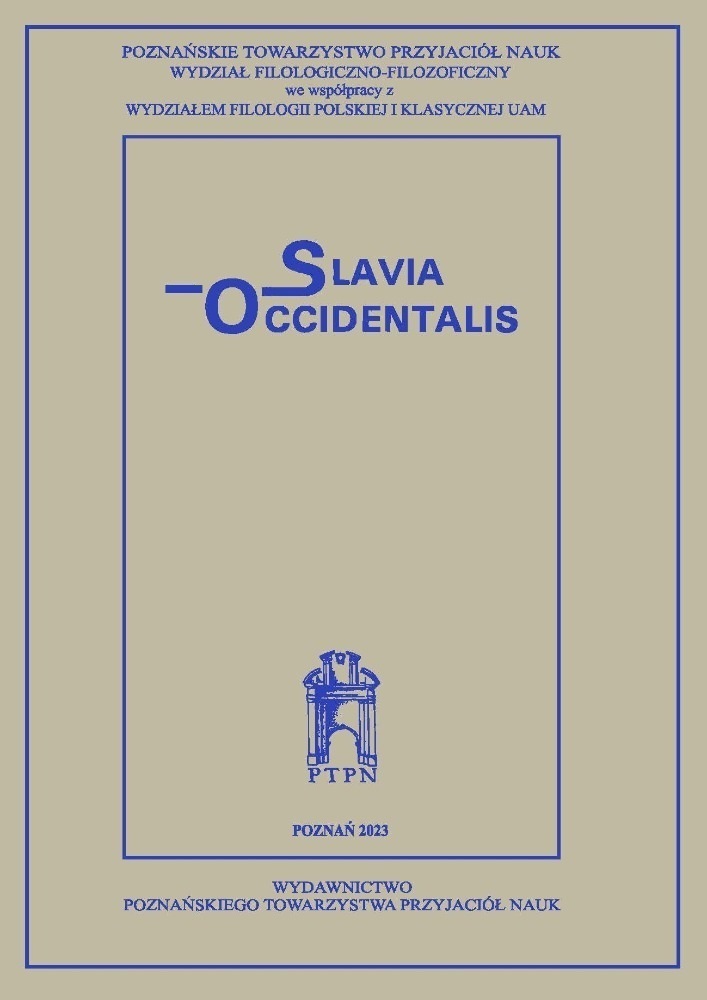Abstrakt
Visual poetical text came into existence as a connection of two types of activity - the poetical (verbal) one and the visual (graphic) one. It composes a varied phenomenon which unites poetry, painting, graphic arts, fine arts and photography. That dependence on one another was understood differently by particular artists in distinct periods of history. Russian literature also has its rich history of visual poetry. The first attempts, which were started by Symeon Potocki in the 17th century, were continued by Gavrila Derzhavin, Aleksey Apukhtin, Erl Martov as well as others. This new and productive period of visual poetry was connected with the vanguard movement from the beginning of the 20th century, which spread across Europe. The biggest contribution into the development of this literary genre in Russia, not only in a practical manner but also in a theoretic one, brought in the Futurists and Constructivists, for whom the form became an essence, and a word became an image. The modern Russian visual poetry integrates the ideas of figurative poetry, concrete poetry and poesia visiva, and provides the examples of works which combine art and literature in a complex manner both artistically and compositionally. It is only because of the author’s intention (such as a definition in the title or a placement among other poems etc.) that they are considered as poetry. Therefore, visual poems become a special challenge for the traditional and cliché manner of interpreting art. The perception of visual texts requires readers to participate actively in discovering new and unexpected interpretations of the works. This idea goes beyond the limits of a classical poetic text. The variety of visual poetry broadens our perception, our consciousness, and our existence in a specific reality. And what is important, this process takes place on the language level, which is a basic and direct aspect of interpersonal communication.
Bibliografia
Сигей С., Краткая история визуальной поэзии в России: Литература после живописи,
[w:] Ученые записки отдела живописи и графики Ейского историко-краеведческого музея, Ейск 1991.
Ndiaye I.A., Chudasov I., Od akrostychu do akrokonstrukcji (z historii rosyjskiej poezji wizualnej), „Acta Polono-Ruthenica” 2010, t. 15.
Poezja Wasilija Kamieńskiego „pod mikroskopem”. Z historii rosyjskiej poezji wizualnej, „Acta Neophilologica” 2011, t. 13.
Бирюков С., РОКУ УКОР. Поэтические начала, Москва 2003.
Садок судей II, [w:] А.Г. Соколов, М. В. Михайлова, Русская литературная критика конца Х1Х – начала ХХ века. Хрестома-тия: Учебное пособие для филологических специальностей унтверситетов, Москва 1982.
Бирюков С., Зевгма. Русская поэзия от маньеризма до постмодернизма, Москва 1994.
Baranowa M., Barski W., Baru M., Biriukow S. Poezja dla oka / Поэзия для глаза [w:] Zewgma. Poezja rosyjska... – Зевгма. Русская поэзия..., Moskwa 1994.
Точка зрения. Визуальная поэзия: 90-ые годы, ред. Д. Булатовф, Калининград 1998.
Iser W., The Act of Reading: A Theory of Aesthetic Response, Baltimore 1978.
Licencja
Copyright
© 2011 Poznańskie Towarzystwo Przyjaciół Nauk Wydział Filologiczno-Filozoficzny we współpracy z
Wydziałem Filologii Polskiej i Klasycznej Uniwersytetu im. Adama Mickiewicza w Poznaniu
OPEN ACCESS
